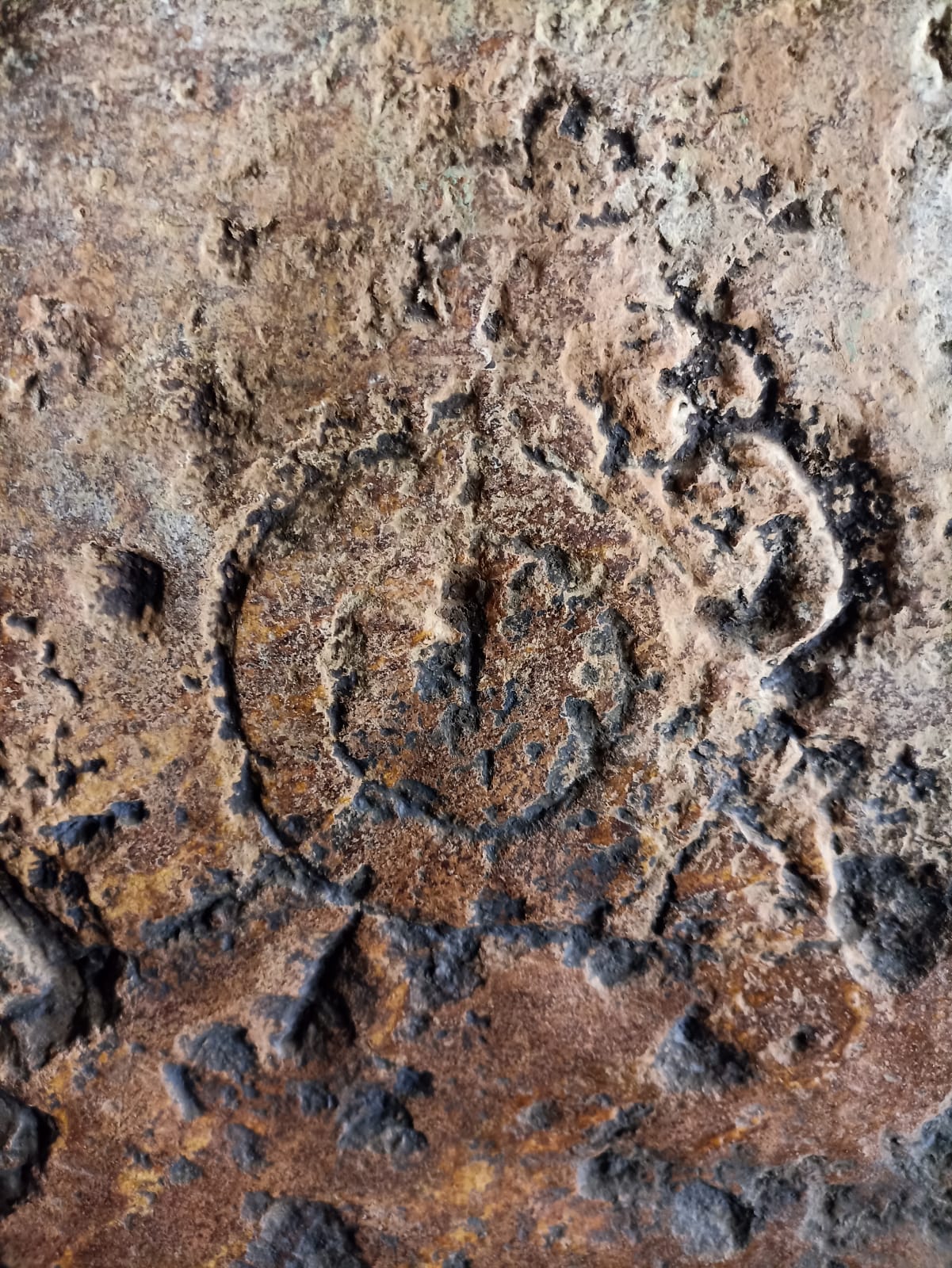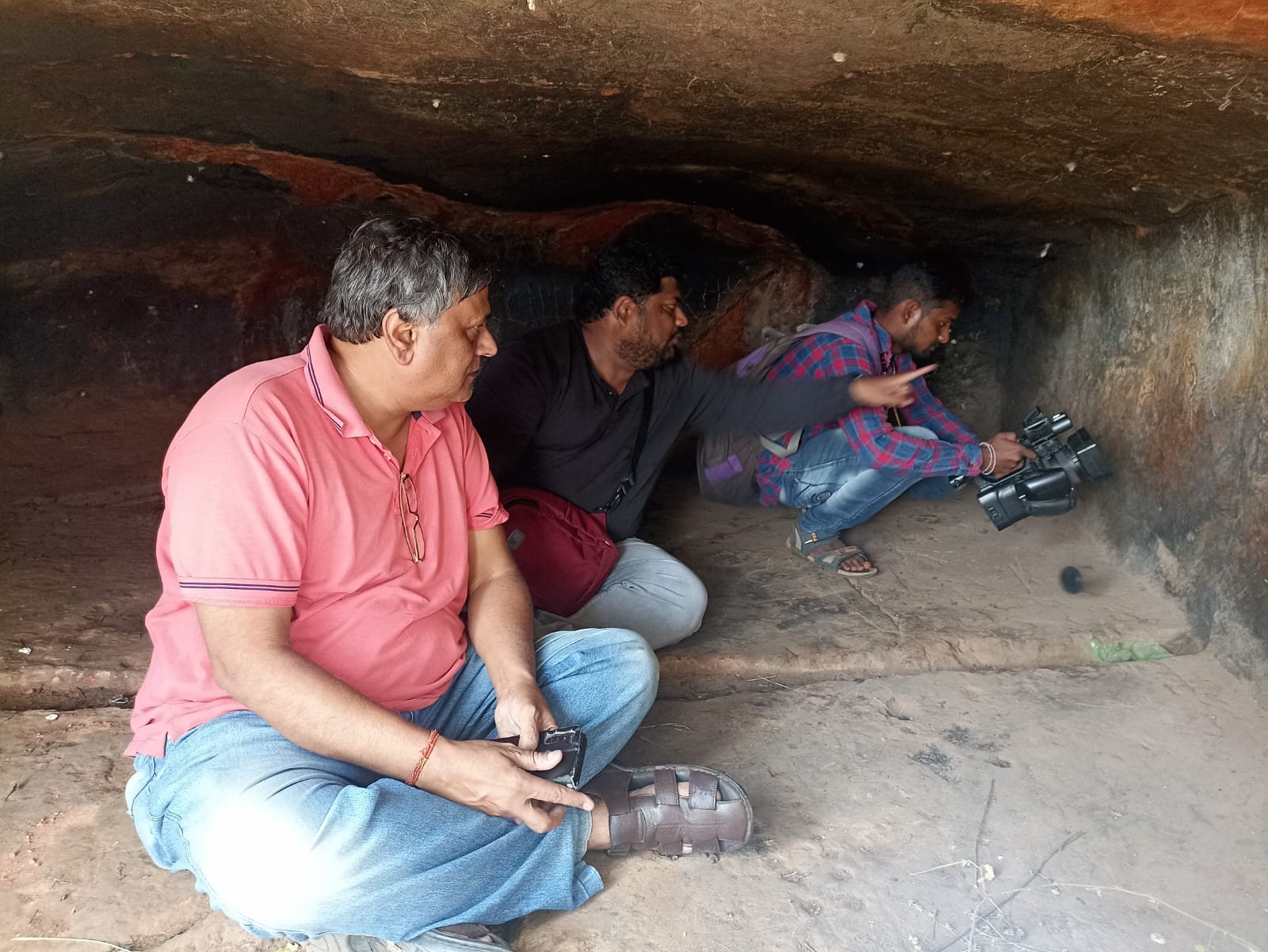Bhubaneswar: Odisha perhaps has the highest number of prehistoric rock art and caves among all states and one among them is ensconced atop a small hillock at Narangarh village near Tapang in Khurda district. This cave, locally known as Pandavahara Gumpha, was a revered spot and had been occupied by some holy man till three decades ago before a small landslide made the place inaccessible.
The ancient cave was again exposed when the Orissa Mining Corporation (OMC) started clearance work for mining of Khondalite stone from the area. The land belongs to the Shree Jagannath Temple and has been leased to OMC for quarrying the stone blocks, who have been digging up the hill for the last two years.
 An exploration team from the Indian National Trust for Art and Cultural Heritage (INTACH), comprising of Anil Dhir, Dr Biswajit Mohanty, Deepak Nayak and Bikram Nayak, recently visited the 20 feet by 10 feet wide cave, which is a natural formation widened by chiselling and is very akin to the caves found in the Khandagiri and Udayagiri hills. There are many rock art and inscriptions carved on the walls. Engravings in various geometrical forms and figures of humans and animals are extensively depicted. Stone-age tool implements too have been reportedly found earlier in the vicinity of the cave.
An exploration team from the Indian National Trust for Art and Cultural Heritage (INTACH), comprising of Anil Dhir, Dr Biswajit Mohanty, Deepak Nayak and Bikram Nayak, recently visited the 20 feet by 10 feet wide cave, which is a natural formation widened by chiselling and is very akin to the caves found in the Khandagiri and Udayagiri hills. There are many rock art and inscriptions carved on the walls. Engravings in various geometrical forms and figures of humans and animals are extensively depicted. Stone-age tool implements too have been reportedly found earlier in the vicinity of the cave.
The INTACH team trekked up the hill with the help of the locals, surveyed the cave and documented and recorded the ancient rock carvings and inscriptions.
According to Anil Dhir, the animal and human figurines carved on the walls indicate that the cave may have prehistoric origins. It is very similar to other caves found in the Mahanadi Valley.
Biswajit Mohanty stressed the need to stop all quarrying activity immediately as the excavation and cutting has reached the base of the cave and is just 7-10 metres away at the base of the hilltop. “The use of heavy machinery, compressors and cutters just near the cave can spell doom. Besides, the place is an elephant corridor and the pachyderms are frequently seen here. The recent death of two elephants in nearby Bhusandpur is indicative of this fact,” he said.
Mohanty had last year visited the Bhima Mandali Caves in Sambalpur district and raised the issue of the sheer neglect and vandalism that was happening to the prehistoric sites.

Deepak Nayak, who has earlier discovered half a dozen such caves in the Mahanadi delta area, said that the inscriptions carved on the walls are in the Brahmi script. The symbols have motifs of both Jainism and Buddhism.
According to him, a proper study of the inscriptions should be undertaken by epigraphists and experts. He further said that the nearby hillocks too may hold such ancient wonders and that a proper archaeological survey of the region should be undertaken by the ASI and the State Archaeological Department.

While prehistoric rock art and caves are mostly found in the hills of Sundargarh, Jharsuguda, Sambalpur and Kalahandi, recent discoveries by INTACH teams in the lower Mahanadi Valley, in Kandhamal district and other areas need proper study. However, the survey team is certain of the antiquity of the Narangarh cave inscriptions are not less than 1,500 years old.
According to Amiya Bhusan Tripathy, the State Convener of INTACH, the matter of the Pandavahara caves will be taken up with the state and central authorities for proper conservation and preservation. He has said that INTACH is already in touch with the Culture Department for the preservation of the Rock Art in the Bhima Mandali and a report has been submitted. Since the rock art site is about 45 minutes away from Bhubaneswar it can be turned into a major attraction for heritage tourism.


